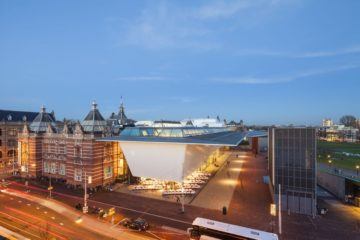Witold Rybczynski at The Hedgehog Review:
 “Good architecture can be startling, or at least might not look like what we are used to,” writes the critic Aaron Betsky in Architect magazine. “Experimentation can sometimes look weird at first, but it is a necessary part of figuring out how to make our human-built world better.” Now so used to buildings that break the bounds of convention, we find the suggestion that experimentation is an essential part of good architecture unremarkable, even banal. But is it true?
“Good architecture can be startling, or at least might not look like what we are used to,” writes the critic Aaron Betsky in Architect magazine. “Experimentation can sometimes look weird at first, but it is a necessary part of figuring out how to make our human-built world better.” Now so used to buildings that break the bounds of convention, we find the suggestion that experimentation is an essential part of good architecture unremarkable, even banal. But is it true?
Berlin’s Altes Museum, built in 1822, doesn’t look like a plumbing fixture. Its architect, Karl Friedrich Schinkel, modeled the 300-foot façade of giant Ionic columns on an ancient Greek stoa (a covered walkway or portico). Inside, he based a two-story-high rotunda on the Roman Pantheon. Schinkel was one of the most inventive architects of the nineteenth century—the plan of the museum, with its circuit of long, narrow galleries, was without precedent, and the severe side and rear elevations, which would inspire later modernists such as Mies van der Rohe, were almost shockingly plain. Yet like so many architects before him, Schinkel kept one eye on the past. That meant imitation as well as invention.
more here.
